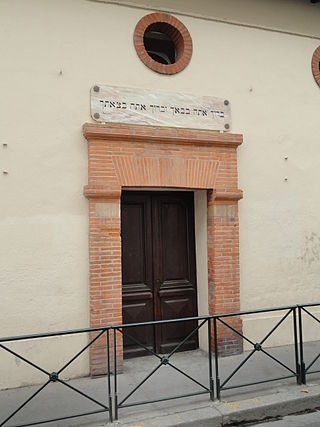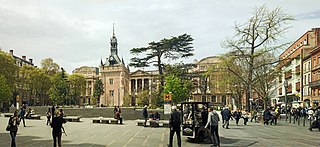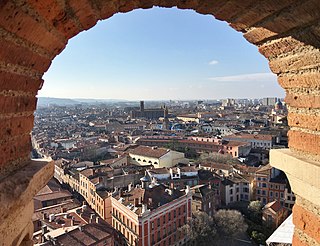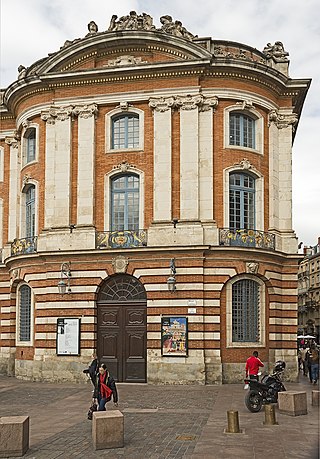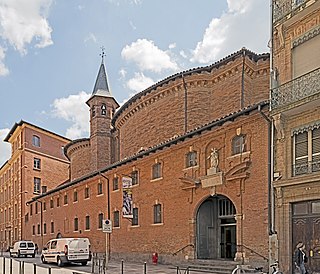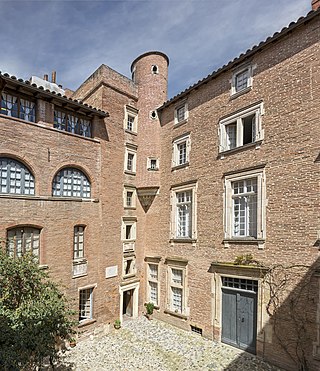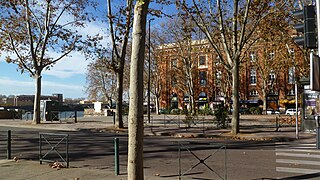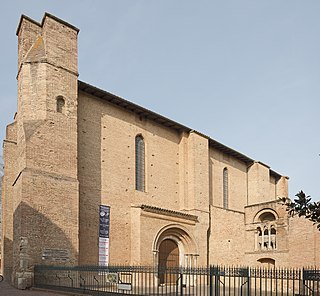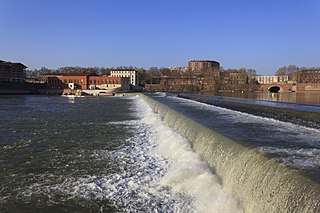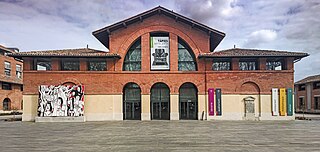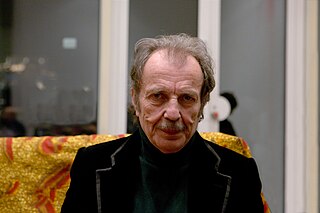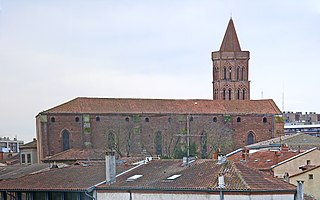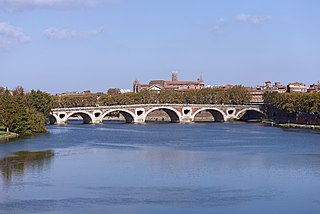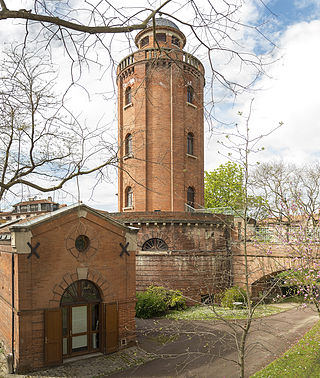Self-guided Sightseeing Tour #5 in Toulouse, France
Legend
Guided Free Walking Tours
Book free guided walking tours in Toulouse.
Guided Sightseeing Tours
Book guided sightseeing tours and activities in Toulouse.
Tour Facts
5.7 km
106 m
Experience Toulouse in France in a whole new way with our self-guided sightseeing tour. This site not only offers you practical information and insider tips, but also a rich variety of activities and sights you shouldn't miss. Whether you love art and culture, want to explore historical sites or simply want to experience the vibrant atmosphere of a lively city - you'll find everything you need for your personal adventure here.
Activities in ToulouseIndividual Sights in ToulouseSight 1: Synagogue
The Palaprat Synagogue is a synagogue in the city of Toulouse, capital of the Occitanie region, in France. It is located at no. 2 rue Jean-Palaprat, from which it takes its name, at the intersection of rue de la Colombette.
Sight 2: Square du Général de Gaulle
The Square Charles-de-Gaulle is a street in Toulouse, capital of the Occitanie region, in the South of France. The north side of the square, along the rue Lafayette, is more specifically the space of secularism.
Sight 3: Office de Tourisme
Toulouse is the prefecture of the French department of Haute-Garonne and of the larger region of Occitania. The city is on the banks of the River Garonne, 150 kilometres from the Mediterranean Sea, 230 km (143 mi) from the Atlantic Ocean and 680 km (420 mi) from Paris. It is the fourth-largest city in France after Paris, Marseille and Lyon, with 504,078 inhabitants within its municipal boundaries (2021); its metropolitan area has a population of 1.5 million inhabitants (2021). Toulouse is the central city of one of the 22 metropolitan councils of France. Between the 2014 and 2020 censuses, its metropolitan area was the third fastest growing among metropolitan areas larger than 500,000 inhabitants in France.
Sight 4: Théâtre du Capitole
The Théâtre du Capitole de Toulouse is an opera house within the main administration buildings, the Capitole, of the city of Toulouse in south-west France. It houses an opera company, ballet company and symphony orchestra, Orchestre national du Capitole de Toulouse.
Sight 5: Église Saint-Jérôme
The church of the Sanctuaire Saint-Jérôme, rue du Lieutenant-Colonel-Pélissier, is a church built by the Compagnie royale des Pénitents bleus de Toulouse. It was built in the 17th century by architect Pierre Levesville under Louis XIII, the first French king to join the brotherhood. The Pénitents bleus called on Toulouse's finest artists to decorate their chapel, which didn't suffer too much during the French Revolution.
Sight 6: Hôtel Caulet-Resseguier
Sight 7: Chapelle Saint-Jean-Baptiste
The Saint-Jean-Baptiste chapel is located in the heart of old Toulouse, at no. 7 rue Antonin-Mercié, near the Musée des Augustins. It depends on the parish sector of the Saint-Jérôme church. It should not be confused with the church of the same name in the Sept Deniers district.
Wikipedia: Chapelle Saint Jean-Baptiste (Toulouse) (FR), Website
Sight 8: Musée du Vieux-Toulouse
The Musée du Vieux-Toulouse presents objects evoking the history of the city of Toulouse, from antiquity to the twentieth century. This museum has been established since 1948 in the Dumay Hotel on Rue du May, in the historic center of the city. It is the property of the Société des Toulousains de Toulouse et Amis du vieux Toulouse.
Sight 9: Basilique Notre-Dame de la Daurade
Notre-Dame de la Daurade is a basilica in Toulouse, France. It was established in 410 when Emperor Honorius allowed the conversion of pagan temples to Christianity. The original building of Notre-Dame de la Daurade was a temple dedicated to Apollo.
Sight 10: Place Saint-Pierre
Get Ticket*The Place Saint-Pierre is a street in Toulouse, the capital of the Occitanie region, in the South of France.
Sight 11: Auditorium Saint-Pierre des Cuisines
The Church of Saint-Pierre-des-Cuisines, located on Rue de la Boule, next to Place Saint-Pierre in Toulouse, is the oldest church in southwestern France. It is built on an old Gallo-Roman necropolis from the fourth century. It has been classified as a historical monument since 1977 and placed under the responsibility of the Saint-Raymond Museum in Toulouse. Today, it houses a 400-seat auditorium for the Toulouse regional conservatory.
Sight 12: EDF Bazacle Complex
The Bazacle is a structure in and on the banks of the River Garonne in the French city of Toulouse.
Sight 13: Les Abattoirs
Les Abattoirs, Musée – Frac Occitanie Toulouse, combines a museum of modern and contemporary art (Musée) and a regional collection of contemporary art (Frac). It is located in the French Occitanie region, in the city of Toulouse. Les Abattoirs keep approximately 3,880 works and objects of all origins. Works of modern and contemporary art range for the oldest from 1934 to 2020, for the most recent acquisitions.
Sight 14: Los Pès del parpalhòl
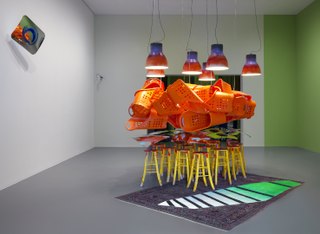
Jessica Stockholder is a Canadian-American artist known for site-specific installation works and sculptures that are often described as "paintings in space." She came to prominence in the early 1990s with monumental works that challenged boundaries between artwork and display environment as well as between pictorial and physical experience. Her art often presents a "barrage" of bold colors, textures and everyday objects, incorporating floors, walls and ceilings and sometimes spilling out of exhibition sites. Critics suggest that her work is informed by diverse artistic traditions, including abstract expressionism, color field painting, minimalism and Pop art. Since her early career, they have noted in her work an openness to spontaneity, accident and marginality and a rejection of permanency, monetization and disciplinary conventions that Stephen Westfall characterized as an "almost shocking sense of freedom."
Sight 15: What’s a public sculpture?N°3
Sight 16: Acrobates et Musiciens
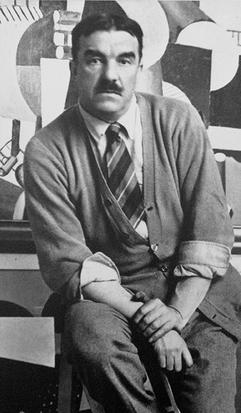
Joseph Fernand Henri Léger was a French painter, sculptor, and filmmaker. In his early works he created a personal form of cubism which he gradually modified into a more figurative, populist style. His boldly simplified treatment of modern subject matter has caused him to be regarded as a forerunner of pop art.
Sight 17: Agoraphobia
Franz West was an Austrian artist.
Sight 18: Église Saint-Nicolas
Saint-Nicolas Church is located in Saint Cyprien neighbourhood on the west side of the Garonne River, just outside the old city walls of Toulouse.
Sight 19: Pont de la Daurade
The Pont de la Daurade is an old bridge that spanned the Garonne, slightly downstream from the Pont-Neuf in Toulouse. It linked the Faubourg Saint-Cyprien, on the left bank of the river, to the monastery of La Daurade and the church of the same name, on the right bank. It was the second masonry bridge built over the Garonne in Toulouse, after the aqueduct bridge built in the Gallo-Roman period in the first century. It was built in the second half of the twelfth century of stone and brick masonry, but frequent flooding led the municipal authorities to gradually replace the brick vaults with wooden frame decks, as they were washed away. The bridge was covered in 1480, which gave it the name of Pont-Couvert.
Sight 20: Pont Neuf
The Pont-Neuf is a bridge in Toulouse over the Garonne River, it connects the Place du Pont-Neuf to the Rue de la République. Built in the sixteenth and seventeenth centuries, it is, despite its name, the oldest bridge in the city crossing the Garonne. The Pont-Neuf was once an entrance to the city, symbolized on the left bank by a triumphal arch bearing an equestrian statue of King Louis XIII.
Sight 21: Château d'eau Charles Laganne
The Water Tower is a brick tower located at the junction of the Cours Dillon and the Pont-Neuf, in Toulouse. As its name suggests, the building was originally used for the distribution of water in the centre of the city, but was not strictly speaking a water tower since it did not have a storage tank. It was converted in 1974 into an exhibition space dedicated to photography and is now a very popular place for the people of Toulouse, as well as a high place of culture.
Share
Disclaimer Please be aware of your surroundings and do not enter private property. We are not liable for any damages that occur during the tours.
GPX-Download For navigation apps and GPS devices you can download the tour as a GPX file.
